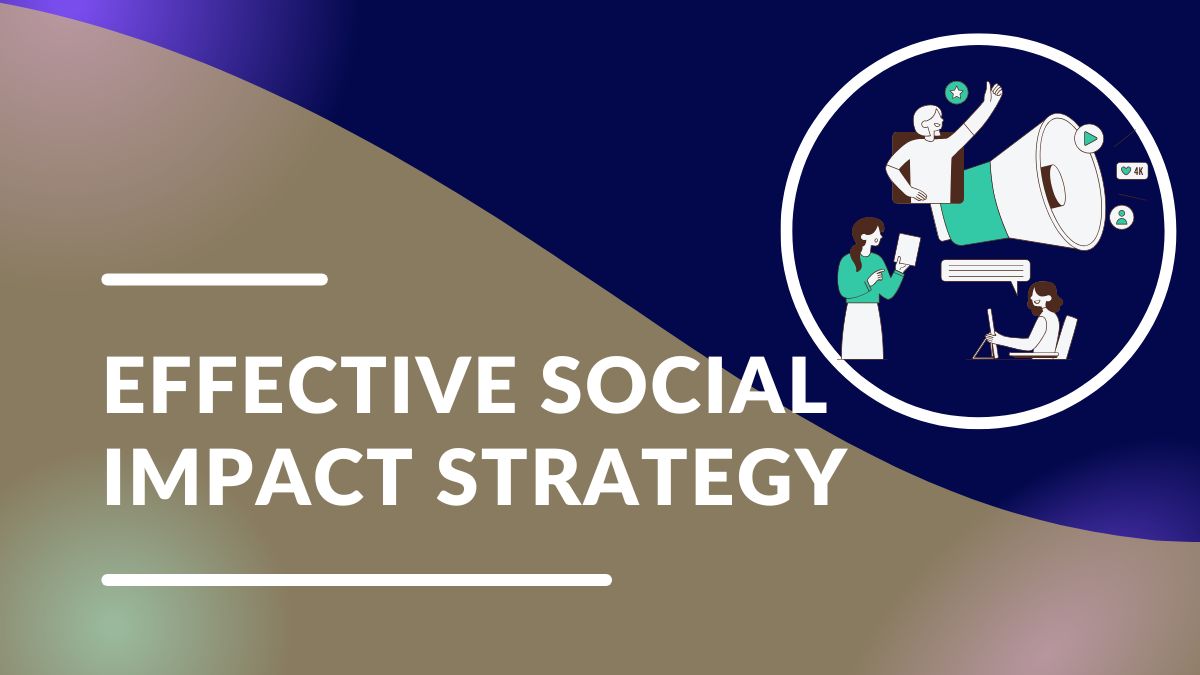As Q4 ends, it’s the perfect time to plan for the year ahead. I recently moderated a panel on supplier diversity, highlighting the challenge of terms like diversity, equity, and inclusion feeling like checkboxes. In this article, I explore social impact strategy’s integration into business and how to do it effectively.
1. Start with Your Core Values
Begin with understanding. Your vision and values drive everything, including social impact strategy. Reflect on where you want to make an impact. This may involve reexamining your mission, vision, and values. It’s crucial to align intention with action, avoiding virtue signaling. Your social impact strategy should respond directly to your organization’s vision and values, aligning values with social impact.
2. Embrace Community Support

Supporting your community reaps rewards, backed by business data. Companies with active social impact campaigns make 29% more sales and experience 67% less employee turnover. When you genuinely give back to your communities, it resonates with customers, motivating them to patronize you, and inspires employees to keep working with you. This is a key aspect of your social impact strategy.
3. Identify the Beneficiaries
Consider who benefits most from your support. Avatar identification isn’t just important for sales, it’s critical for social impact. Who are the communities that you want to support? Leverage your organization’s strengths, and don’t forget your employees’ passions. Listening campaigns can help you gather data on which communities to support and who’s motivated to drive social change when the strategy rolls out.
4. Connect with Aligned Organizations

Research organizations aligned with your mission, values, and employee motivations. For instance, if your mission aligns with LGBTQ rights, find organizations deeply engaged in this work. A quick Google search on the topic will lead you to folks like the Trevor Project or The True Colors Fund. You can start by checking their website for ways to get involved. Remember, if your organization’s main service offering isn’t social impact, it makes more sense for you to collaborate with one that is, versus trying to reinvent the wheel. By acting as an ally and advocate, you recognize that having your name on things or seeking credit isn’t the goal. Focus on how you can support the causes you care about, without making it about you, your organization or the public perception (points) you gain by investing in these efforts. This subtle distinction can be the difference between being an advocate and “checking a box”. It’s the difference between performance and authenticity.
5. Determine What Support Will Look Like

Choose the type of support you are willing to lend: financial, time, training, hiring, or product donations. Don’t overlook the value of your platform, social influence, and network. Connect people in your network with organizations working on causes you support, creating new opportunities for impact. As an organization, you may consider what is the easiest and most immediate way you can lend support to these causes.
Support can take numerous forms such as financial donations, volunteering your time, providing training, changing your hiring practices, or donating products and services. Consider all the avenues through which your organization can make a positive impact. If you are stuck for where to begin, ask the organization directly. They probably have preferences for what they would like to receive based on their current projects and initiatives. Start a conversation and be prepared to be flexible. What you want to give may not be what’s needed right now, and that’s ok too.
6. Create an Action Plan
Align your strategy, support methods, and chosen organizations. Develop a concrete action plan for implementing your social impact initiatives. Honesty about your values eliminates virtue signaling and helps you create a viable plan that centers on social impact and provides you support as a happy byproduct of you being in business, thus creating an effective action plan for social impact. Many for-profit organizations can get distracted and overwhelmed by the profit and loss statement, and making sales, but if those sales don’t have an opportunity to truly change the world in a way that you and your employees care about, then it may be time to consider what opportunities you and your org are still leaving on the table.
If this topic resonates with your team, reach out to us. We have scheduled panel conversations on social impact strategy and love sharing our insights with your organization and leaders. Consider reaching out to us for a consultation if you need help starting the conversation about social impact strategy for your org.





0 Comments